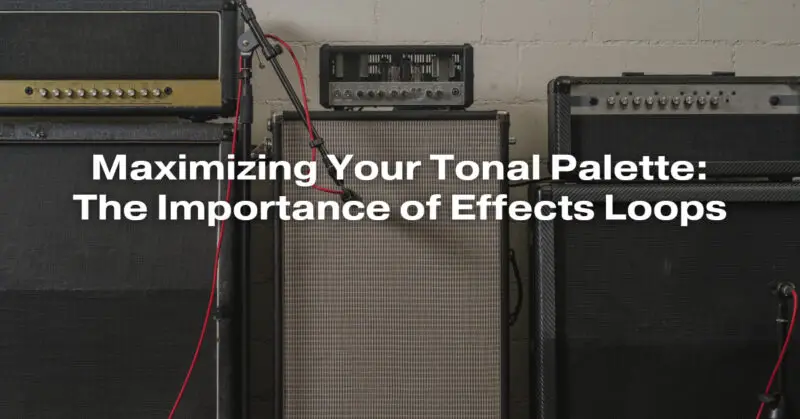Effects loops, commonly found on many guitar amplifiers, play a crucial role in maximizing your tonal palette and optimizing your guitar effects chain. Understanding how to use effects loops effectively can significantly impact your overall sound and signal quality. Here’s a guide to help you make the most of effects loops:
What Is an Effects Loop? An effects loop is a built-in feature in many guitar amplifiers that allows you to insert your effects pedals or rack-mounted effects units at a specific point in your signal chain, typically after the preamp section and before the power amp section. This placement enables you to manipulate your signal with various effects while preserving the natural tone of your amplifier.
Advantages of Effects Loops:
- Preservation of Core Tone: One of the primary advantages of effects loops is that they allow you to add effects without altering the core tone of your amplifier. This is especially valuable for amplifiers with rich, overdriven preamp tones that you want to maintain.
- Reduced Noise: Placing time-based effects (such as delay and reverb) in an effects loop can reduce noise and interference, resulting in cleaner and more pristine sound quality.
- Flexible Signal Routing: Effects loops give you control over where in your signal chain you want to place effects. You can experiment with different placements to achieve unique sonic textures.
Using Effects Loops Effectively:
- Understanding Send and Return: An effects loop typically consists of two main components: the “Send” and “Return.” The “Send” carries your preamp signal to the effects pedal, while the “Return” brings the processed signal back into the amplifier. Connect your effects pedal’s input to the “Send” and the output to the “Return.”
- Balancing Levels: It’s essential to balance the levels of your amplifier’s preamp and power amp sections when using an effects loop. Adjust the “Send” and “Return” level controls on your amplifier to ensure a consistent volume when your effects are engaged.
- Choosing the Right Effects: Effects loops are particularly beneficial for time-based effects like delay, reverb, and modulation effects. Placing these effects in the loop allows you to create lush soundscapes without altering your amp’s core tone. However, distortion, overdrive, and wah pedals often work best in front of the amp’s input.
- Experimentation: Don’t be afraid to experiment with the placement of effects within the effects loop. Some effects, like compressors or EQ pedals, can be placed both in front of the amp and in the loop, offering different tonal possibilities.
- Order Matters: Even within an effects loop, the order of your effects pedals can influence your tone. For example, placing reverb before delay can yield a different sound compared to having delay before reverb.
- A/B Switching: Some amplifiers offer A/B switching for the effects loop, allowing you to toggle between a wet (effected) and dry (unaffected) signal. This feature can be handy for dramatic sound shifts during performances.
Conclusion: Effect loops are powerful tools for guitarists looking to expand their tonal palette and optimize their effects setup. By understanding how effects loops work and experimenting with different placements and effects, you can tailor your sound to your preferences and musical style while preserving the core tone of your amplifier.


